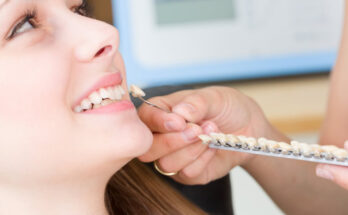A bright, white smile is often associated with good health and personal hygiene. However, many people struggle with teeth staining, which can be a source of embarrassment and discomfort. Understanding the common causes of teeth staining is crucial in order to prevent and treat it effectively. A dentist in Dacula will be able to assess your condition find the root cause of your teeth staining, and provide treatment.
In this blog, we will explore the primary reasons why teeth become stained and offer insights into how you can maintain a dazzling smile.
1. Food and Beverages
One of the most common causes of teeth staining is the consumption of certain foods and drinks. In fact, substances that have strong pigments, called chromogens, can attach to the enamel of your teeth, leading to discoloration. Some of the biggest culprits include:
- Coffee: Known for its dark color and acidic nature, coffee can easily stain teeth over time.
- Tea: Both black and green teas contain tannins, which promote staining.
- Red Wine: The dark color and acidity of red wine make it notorious for staining teeth.
- Cola and Other Sugary Drinks: These beverages often contain artificial coloring and acids that can erode enamel and lead to stains.
- Berries and Sauces: Dark-colored berries (like blueberries) and sauces (such as soy sauce and tomato sauce) can contribute to staining.
Prevention Tips:
- Use a straw to drink stained beverages.
- Rinse your mouth with water after consuming staining foods or drinks.
- Brush your teeth about 30 minutes after eating or drinking staining substances.
2. Tobacco Use
Both smoking and chewing tobacco are significant factors in teeth staining. The nicotine and tar found in tobacco products can cause yellow or brown stains on the teeth. So, smokers and tobacco users are also more likely to develop gum disease and other oral health issues, which further contribute to discoloration.
Prevention Tips:
- Quit smoking or using tobacco products.
- Regularly visit your dentist for cleanings and check-ups.
3. Poor Dental Hygiene
Inadequate brushing and flossing can lead to plaque and tartar buildup, which can cause teeth to appear yellow or brown. Plaque is a sticky film of bacteria that forms on teeth, and if not removed, it can harden into tartar—a substance that only a dental professional can remove.
Prevention Tips:
- Brush your teeth at least twice a day with fluoride toothpaste.
- Floss daily to remove plaque between teeth.
- Use an antibacterial mouthwash to reduce plaque buildup.
4. Certain Medications

Some medications are known to cause teeth staining as a side effect. Notable examples include:
- Antibiotics: Tetracycline and doxycycline can stain teeth when given to children whose teeth are still developing.
- Antihistamines: Some antihistamines, such as Benadryl, can cause discoloration.
- Antipsychotic Drugs: Certain medications used for mental health conditions can also lead to staining.
- Chemotherapy and Radiation: Treatments for cancer can affect the color of your teeth.
Prevention Tips:
- Discuss potential side effects with your doctor before starting new medications.
- Practice good oral hygiene to counteract the staining effects of necessary medications.
5. Aging
As you age, the outer layer of enamel on your teeth wears away, revealing the yellowish dentin beneath. This natural process can make your teeth appear more yellow over time. In addition, cracks and grooves in aging teeth can attract stains more easily.
Prevention Tips:
- Maintain regular dental check-ups to manage enamel wear.
- Consider professional whitening treatments to combat age-related discoloration.
6. Genetics
Your genetic makeup can also play a role in the color of your teeth. Some people naturally have brighter or thicker enamel than others, making them less prone to staining. Conversely, if your parents have yellow or stained teeth, you may be more likely to experience similar issues.
Prevention Tips:
- Be proactive with your dental care routine if you are genetically predisposed to teeth staining.
- Consult with your dentist about personalized strategies to maintain a bright smile.
Conclusion
By understanding the causes and implementing preventive measures of teeth staining, you can maintain a healthy and attractive smile. Remember to practice good oral hygiene, make mindful dietary choices, and seek professional dental care regularly.
If you do experience staining, there are many effective treatments available, from over-the-counter whitening products to professional cleaning and whitening services offered by your dentist.




